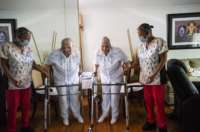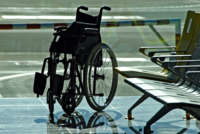The National Institute for Health and Care Excellence (NICE) has published new guidelines for the treatment of myalgic encephalomyelitis (ME). It comes after delay, controversy, and decades of harm for people living with this debilitating disease. But while the new guidelines have some changes, the flaws in both them and in medical care in the UK, still undermine any good that is to be found in NICE’s new treatment recommendations – leaving them as a whitewash of systemic problems.
NICE and the ME guidelines
As I previously wrote, NICE has been at the centre of a storm over its ME guidelines. It had not updated them since 2007. In short, NICE has been drawing up new treatment guidelines. But the process has proven contentious. This is because NICE planned to remove a treatment called graded exercise therapy (GET). It’s been shown to cause harm to ME patients. NICE was also shown to be downgrading the effectiveness of cognitive behavioural therapy (CBT) for ME patients. You can read the full background on GET and CBT here.
NICE was due to publish the final version of the guidelines on 18 August. But it pulled them at the last minute. This was due to organisations like Royal Colleges and NHS England not agreeing with the new guidelines. So, NICE held a round table event with stakeholders on 18 October to try and reach an agreement. The minutes of the meeting and accompanying information is telling. Analysis by Dr Keith Geraghty shows some medical professionals trying to undermine NICE’s decision making process on GET.
As barrister and ME patient Valerie Eliot Smith wrote:
It seems that there were some cracks in NICE’s round table which are now becoming apparent. The optimism expressed in NICE’s news release may have been premature.
NICE published the final guidelines on Friday 29 October. In short, the now-published guidelines are almost the same as the leaked ones which I wrote about here – which are slightly different again from November 2020’s draft, which I wrote about here. The headline is that NICE has removed GET and downgraded CBT.
But none of this is by any means perfect.
Push-back from the Royal Colleges
The NICE guidelines have already had pushback from clinicians supportive of exercise therapy and CBT. This is what Eliot Smith referred to as the “cracks” in the round table. A prime example is a joint statement by various Royal Colleges on the guidelines – including those of physicians, psychiatrists, and GPs. It said the new guidelines:
understate the importance of activity and exercise in the management of ME/CFS and the connection between people’s mental and physical health.
The statement also defended CBT and kicked-back against NICE’s downgrading of it. It went on to say that GET:
as defined in the guidance is not reflective of the personalised paced exercise programmes that are currently used in the NHS and termed GET. These have provided benefit to many patients and should not be discontinued. However, we recognise that the phrase GET is unhelpful and this terminology should be dropped to allow clinicians to work with their patients in a more productive way.
This immediately shows that despite NICE’s efforts, some Royal Colleges won’t accept the guideline changes. After all, changing what something is called is not going to change the harmful impact it is having on patients. And by NICE’s own admission, doctors do not have to follow the guidelines. It stated that:
NICE guidelines are not binding. They inform the judgement of bodies providing NHS services and their clinicians, nothing more.
You’d be forgiven for thinking ‘what’s the point of the guidelines if doctors won’t have to follow them’. Already some medical professionals are re-wording GET to ‘graded activity management’ (GAM) or similar: NHS services in Bedfordshire and Salford are two examples of this. And it fits perfectly with the Royal Colleges’ claims about GET not really being GET when they’re using it, which appears to be a nonsense. Some private physiotherapists are also still advertising it.
Plus, one doctor highlighted another potential issue from the medical profession.
Leaving ‘loopholes’ in the medical landscape
ME doctor Nigel Speight wrote on Facebook that some medical professionals who believe in a psychiatric/biopsychosocial approach to ME:
will a) hang on to the loophole left for CBT b) carry on GET but call it “Graded Activity Management c) deny many patients a diagnosis of ME by calling them FND (Functional Neurological disorder) PP (Perplexing presentations) and MUS (Medically Unexplained Symptoms). Children will still be called FII (Fabricated and Induced Illness) and severe cases will be referred to psychiatry as Pervasive Refusal syndrome. It is our job to prevent all of this.
In other words, doctors will diagnose people with conditions and tell them the alleged cause and treatment is often psychological to maintain this status quo.
The Wessely school of thought?
Then, NICE has placed much of the emphasis on patients steering the direction of their treatment. Overall, it states that ME can be “self-managed”. For example, on energy management, NICE advises medical professionals to tell people with ME that it:
is a self-management strategy led by the person themselves with support from a healthcare professional in an ME/CFS specialist team
NICE says the same for CBT’s role and also for flare-ups of symptoms.
This self-management approach is straight out of the playbook of Simon Wessely – a psychiatrist involved in, and a proponent of, GET and CBT and the biopsychosocial (BPS) model of treatment.
Downplaying ME
Wessely carried out a review of the Mental Health Act for the government. In it, he pushed the emphasis on the patient leading what treatment they had; ‘self-management’ if you like. This seems good on paper. But in reality, it could leave patients vulnerable. Because if treatments don’t work, then the blame for this can be pushed onto the patient for ‘not trying hard enough’. This absolves medical professionals, and ultimately the system, of responsibility. As Tanmoy Goswami wrote for the Correspondent:
British cultural theorist Mark Fisher, who died by suicide after a lifelong fight against depression, explained that the hijacking of self-care is the logical outcome of capitalism, where the complete burden of your wellbeing is shunted on to you – because hey, hasn’t the free market given you access to everything you’ll ever need? If you still don’t manage to feel better, the fault must be within you.
This scenario leaves ME patients with even less treatment options in the long run. Also, as one Twitter user and ME patient summed up:
As long as the phrase “management of symptoms” is used re [ME], the public, media, and medical profession will continue to see it as a sort of minor inconvenience… which we can live/manage [with]. We need treatment and cure. Enough with “managing”. M.E. kills
Moreover, the patient self-managing their treatment requires good access to medical professionals in the first place. NICE says all of this has to be through an ME specialist clinic or physiotherapist with knowledge of the disease. As I previously wrote, specialist ME clinics are a postcode lottery. The ME Association has a list of them all. Some have closed. Many are led by psychologists. So, the NICE guidelines do not fully marry with the reality of medical provision at all.
More issues
Then you have the corporate media’s negative and often biased coverage of ME. PR firm the Science Media Centre (SMC) sometimes “seeds” (plants) stories in the media. These are often negative about patient-activists. They also prop-up the psychiatric approach to treatment. For example, the Telegraph has published two articles recently by Dr Michael Fitzpatrick. It allowed him to push that GET wasn’t harmful and that patients who were against it were “activists” and “militants”. Fitzpatrick is a long-time associate of Claire Fox – whose sister Fiona is the CEO of the SMC.
Meanwhile, medical professionals are still using exercise therapy in post-viral illness – namely post-and-long Covid. There are already clinics that are using this treatment – one using GET is funded directly by Public Health England. Moreover, many doctors still have limited knowledge about ME – with one survey finding nearly 40% of GPs thought the disease was psychosomatic.
All these things I’ve mentioned combined means that ME will still be viewed as something partly psychosomatic and stall any breakthroughs in the disease. While the ‘think yourself better’ lobby is still dominant, the future of research, treatment and a cure looks bleak.
But ultimately, it’s patients that bear the brunt of this chaos and malice while it unfolds.
Back in the real world
I cannot stress enough that me, my partner, ME patient-activists, and their advocates are not the majority here. We know what’s gone on with GET, CBT, the PACE trial, and the NICE guidelines. But we are a small minority.
The majority of people with or who get an ME diagnosis will not have our insight. They will go to their GP, and their GP will tell them to do ‘flexible’ exercise: at first doing less than they currently do and gradually increasing it. Then, human nature will kick in. If a medical professional tells you that a form of therapy may make you feel better (even if you are supposed to do it gently and flexibly), what will your reaction be? If you’re severely unwell and desperate to get better, you’ll try as hard as you can to do this – maybe exceeding what a doctor has advised you to do and making yourself worse in the long run.
And none of this can answer the most basic question over exercise treatment in ME. Why would you recommend exertion for a disease where one of the most debilitating features is exertion intolerance?
So, even with NICE’s ambiguous ‘flexible’ exercise, people could still be harmed.
An ongoing war
The new NICE guidelines are a small battle won in an ongoing war. This is far from over. For me, the following now needs to happen:
- Patients harmed by GET and CBT need justice from PACE trial authors and proponents. That must be through the courts, the General Medical Council (GMC), or both. The quantitative evidence that these therapies were harmful has been around for over five years. So, someone needs to pay for the fact that medical professionals (and NICE) continued pushing these treatments anyway.
- People also need a specific way to report harm caused by exercise treatment. The not-for-profit group ME Foggy Dog has a petition on this you can sign here.
- What medical schools teach about ME has barely changed since 2002 with 41% not teaching students about the disease at all. The GMC and Medical Schools’ Council have oversight of what schools teach. So, they need to ensure medical education fits in with NICE guidelines. Health Education England (HEE), which also trains medical professionals, needs to do the same.
More work to be done
Also:
- The Royal Societies need to sort their attitudes out. Then they must roll-out updated training programmes for their members. This must ensure that NICE guidelines are understood and followed to the letter.
- There has to be a study into the links between ME and the hereditary, genetic connective tissue disorder Ehlers-Danlos syndrome.
- Many people are unhappy with how the media portrays ME. Charities do not often represent the community or fight for it in the best way possible. So, the community needs to make a concerted effort to get the charities to up their game. Or we need to work out a new model for media engagement; one where misinformation about and misrepresentation of ME (and therefore the SMC specifically) in the media can be robustly countered.
What can’t be answered though is whether any of this will actually happen.
A public inquiry?
Ultimately, as Eliot Smith wrote:
Whatever happens now, it is too late for the millions of patients worldwide who have already died during the last century of “ME/CFS” disbelief. Many patients never had their illness validated nor were they treated with respect and compassion in their lifetimes.
The time has come to call for an independent public inquiry into the history of the treatment of “ME/CFS” patients. Without such an inquiry, the systemic injustice and abuse experienced by patients cannot begin to be addressed.
This guideline has the potential to open up a new chapter in the shameful history of this maligned illness. The opportunity to redress the wrongs of the past and create a better future must be seized with urgency and enthusiasm.
A public inquiry is the least that should happen. And I agree with Smith that this is a moment of opportunity that needs to be seized. But the chaos and distress this has caused people cannot be understated. And the outlook around this disease cannot be painted as anything other than still dire.
This changes nothing
It’s taken me over a week to write this, due to a personal battle with my feelings on the situation. I really wanted to write how brilliant the NICE guidelines were. I’d love to say this marks a sea-change for people living with ME. Because I know how much the community needs hope. But sadly, I don’t think that’s the case.
Yes, NICE has removed GET. On paper, this looks like a breakthrough, but in practice it’s far from that – and it really changes very little. Doctors could well still cause patients harm. Justice for those already harmed seems a long way off. And nothing NICE has done will begin to change the deeply-held views among some medical professionals that ME is ‘all in people’s heads’. It will take a dramatic shift in every area of this debilitating disease for things to actually start changing. And I fear that will be left to the people actually living with it and their advocates to bring this about.
Featured image via NICE – YouTube and NICE – screengrab
By Steve Topple
This post was originally published on The Canary.







 blind people! – it was not inspired by the army.
blind people! – it was not inspired by the army.











 Rachael Maskell MP (@RachaelMaskell)
Rachael Maskell MP (@RachaelMaskell)  𝙹𝚘𝚒𝚗𝙰𝚄𝚗𝚒𝚘𝚗 (@imajsaclaimant)
𝙹𝚘𝚒𝚗𝙰𝚄𝚗𝚒𝚘𝚗 (@imajsaclaimant) 